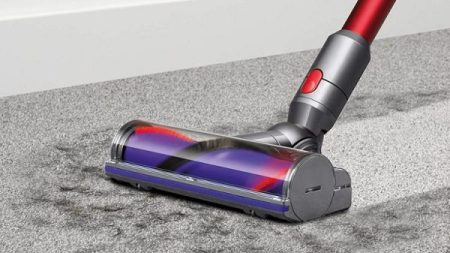In this article on tips for enhancing your Google Chrome browser, we’ll show you how to optimize your Google Chrome settings for better performance. Many extensions and applications are available for Chrome, so it’s tempting to add more to speed up the various tasks. However, adding too many extensions will reduce the browser. This does not mean that you should not add extensions, but you can safely disable them if you do not need them.
In addition to extensions, there are many plugins that are not visible by default. The settings menu shows how many pages are running in the background, but this is not the total number of plugins and extensions. Some extensions are loaded with tabs, which slows down your browsing speed.
Please note that the performance of other applications on your computer may also slow down Google Chrome. To fully optimize Google Chrome, you may need to identify and remove these applications or set your processing priority to Normal or Low. You can change the process priority of programs using Task Manager.
I do not recommend changing the priority of Google Chrome to optimize performance. This is because Windows Task Manager does not recognize the various processes related to Google Chrome and displays them all as chrome.exe. You can not see which process is the browser shell, and which refers to various extensions and plugins. In this case, changing the chrome.exe process priority will further reduce the navigation speed.
Optimize and run Chrome Browser faster
Tips to speed up the Google Chrome browser on Windows
It is important that each browser has good browsing speed and better data response time, but it goes down with time for several reasons. On the other hand, you can run your Chrome browser faster and improve your browsing experience by following these simple tips. In this article, we will explore the method of accelerating Google Chrome Browser on Windows PC.
Speed up Google Chrome Browser
Browse the entire list and see which of these suggestions you want to try. You do not have to try them all – just do what you feel comfortable doing.
1. Enable Preftech
Network actions, also known as trial, can help you access Google Chrome web pages faster. The special feature of Google Chrome is that the pages you rarely visit are cached. You can change the setting as desired.
Go to the Chrome browser settings menu and select Advanced options at the bottom of the page.
Then enable the ‘Read as Use a prediction service to load pages faster ‘ option in ‘Privacy ‘. It is important to note that although the feature makes navigation much faster, it uses more data.
2. Add to Chrome ‘Data Saver’ extension
The sophisticated extension helps you reduce data usage by using Google’s servers to optimize the pages you visit. If you choose this extension, Chrome uses servers to compress the pages you visit before downloading. Please note that pages displayed via private connections (HTTPS) or in incognito tabs are not optimized or displayed by Google. After installing the Data Saver extension for Chrome, it automatically starts compressing web pages as you browse.
3. Use prediction service
Go to Google Chrome> Settings> Show advanced settings.
Under Privacy, select Use a prediction service to load pages faster .
4. Disable unwanted extensions
Most extensions secretly go into the background to continue offering their services. However, they use a significant amount of system resources. This is the only way to disable unwanted extensions. Continue as follows:
Click the hamburger menu at the top right of the Google Chrome browser and select More Tools from the list of displayed options.
Then select Extension (s) from the side menu. You’ll be immediately redirected to the extension page, which lists all the extensions added to the Chrome browser. To turn them off, check the box next to the extensions. If you want
To disable it, check the box next to the extensions. To delete the extension completely, click the trash can icon next to the extension.
5. Delete chrome data
If you do not delete your navigation data regularly, it may accumulate over time and reduce your browser performance. To delete Google Chrome navigation data, just click on the hamburger icon and select History.
Then click the Delete Navigation Data button at the top of the screen. Check the box next to the various data you want to delete and click the Delete Navigation Data button. You may not want to delete your saved passwords. Once you have done that, all your previous navigation data.
6. Select when you want to run Plugin Content
You can speed up your browser’s performance by ensuring that Flash content loads only when you want it to. Go to Chrome Advanced Settings and click Content Settings. There you will find the option under the Privacy section Let me choose when to start the content plugin under the plugin section. If a plugin or Flash content appears on a page, it will only be read when you click on it.
7. Disable
Although it is not recommended to enable this feature, it has many benefits. If you disable images in Chrome, images on web pages will not be displayed or simply not loaded.
If you only read the content of a web page and want to avoid interference such as images, you can disable images to shorten the page load time. To do this, go to the same content settings and check the box next to Do not show images in the Images section.
Enable the ‘Quick’ tab
Speed up your Chrome browser
8. Close the tab faster with an experimental function
A simple but very convenient feature that allows the Chrome browser to quickly close tabs to make the browser faster. In practice, this action allows you to run the Chrome JavsaScript administrator independently of the graphical user interface (GUI), which increases your browser and saves you a lot of time before closing the tabs.
To access this secret setting, enter the chrome: /// flag in the address bar, also known as the Omni box. Locate Quick Tab / Close Window and click the Enable button to enable this feature.
9. Increase RAM for Chrome with an experimental feature
You need to increase the amount of memory that Chrome is allowed to use. By adjusting the value, you can adjust the height and width of the tiles to allocate more RAM. This allows for better scrolling and minimal stuttering when using the browser.
To adjust the setting, enter the default tile in the search dialog box (16), and the two default width and height options will appear on the screen. Use the drop-down menus to change the values from Default to 512.
10. Enable QUIC experimental protocol with experimental function
QUIC is the name of a new experimental protocol and represents a Fast UDP Internet connection. The protocol supports a number of multiplex connections via UDP and was developed to provide security protection equivalent to TLS / SSL, as well as reduced connection and transport latency. In short, the feature prevents multiple access to the server to establish a connection that allows a page to load.
To get started, open a new tab and go to Chrome: //// flagg / . Search for ‘QUIC’ and use the drop-down menu under Experimental QUIC protocol and enable it. After the change, restart Chrome.






